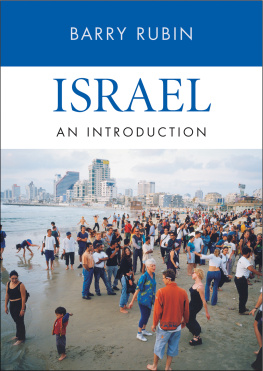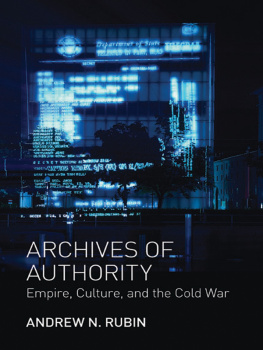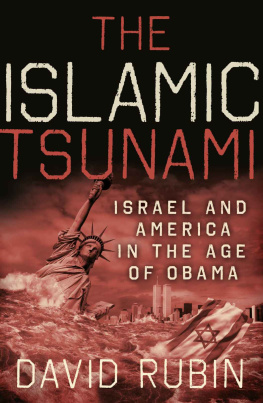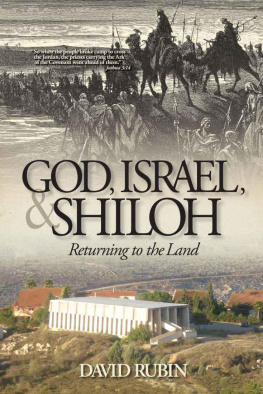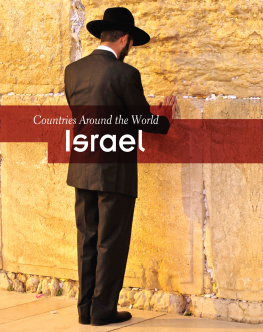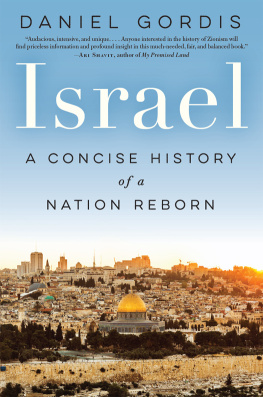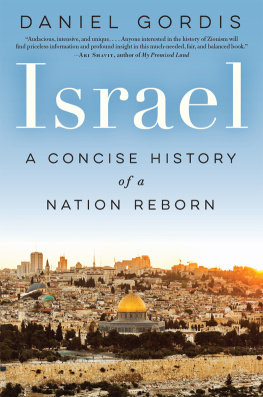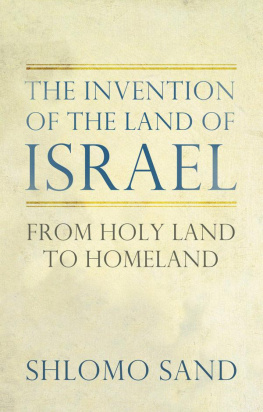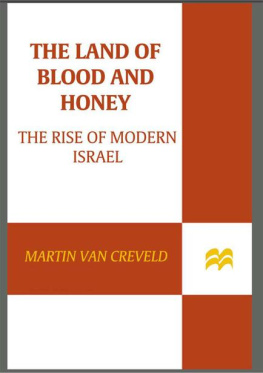ISRAEL
ISRAEL
AN INTRODUCTION
BARRY RUBIN
Yale UNIVERSITY PRESS
NEW HAVEN AND LONDON
Published with assistance from the foundation established in memory of Amasa Stone
Mather of the Class of 1907, Yale College.
Copyright 2012 by Barry Rubin.
All rights reserved.
This book may not be reproduced, in whole or in part, including illustrations, in any form
(beyond that copying permitted by Sections 107 and 108 of the U.S. Copyright Law and except
by reviewers for the public press), without written permission from the publishers.
Yale University Press books may be purchased in quantity for educational, business,
or promotional use. For information, please e-mail (U.K. office).
Designed by Mary Valencia
Set in Minion and Futura type by Newgen North America.
Printed in the United States of America by Sheridan Books.
Library of Congress Cataloging-in-Publication Data
Rubin, Barry M.
Israel : an introduction / Barry Rubin.
p. cm.
Includes bibliographical references and index.
ISBN 978-0-300-16230-1 (pbk. : alk. paper) 1. Israel. I. Title.
DS126.5.R77 2011
956.9405dc23
2011028927
A catalogue record for this book is available from the British Library.
This paper meets the requirements of ANSI / NISO Z39.481992 (Permanence of Paper).
10 9 8 7 6 5 4 3 2 1
Preface
The purpose of this book is simple and straightforward: to provide an introductory text about Israel for both students and the general reader. A huge amount of material could be included in such a volume, so selections had to be made. A key goal here has been to present a rounded picture that goes far beyond history and politics. Indeed, materials in English on Israeli culture, for example, have been particularly limited. This book seeks to fill the gap.
A great deal about Israel is controversial. Often, however, the controversies are artificially manufactured myths and rewritings of history that are not borne out by the evidence. We have striven to be as balanced and as accurate as possible on every point.
This book is a place to begin, not an endpoint. The reader is encouraged to follow up with other material for a fuller picture. If something is not mentioned or is given what some might consider too much or too little space, that is a consequence of the need to cover a huge amount of territory, even though Israel itself is a small country.
Nor is this book meant to be a history of the Middle East or of the Palestinians or of the Arab-Israeli conflict or of the peace process. There are enough works on all these subjects. What there is not, however, is a basic survey of Israel itself.
This book is a project of the Global Research in International Affairs (GLORIA) Center, in the Interdisciplinary Center (IDC) in Herzliya, Israel. The GLORIA Center focuses on Middle Eastern issues as well as the relations of other parts of the world with the region. It publishes the MERIA Journal: The Middle East Review of International Affairs and has produced numerous books and academic studies. Its website is at http://www.gloria-center.org.
Thanks are due to the staff of the GLORIA Center and the many colleagues who contributed to the chapters in this book and who have read it to offer corrections and suggestions. Special credit here goes to Yeru Aharoni and Anna Melman for editing and, in some cases, writing draftsa time-consuming and labor-intensive job. I have done my best to edit the collected material into a comprehensive and accurate introductory book on Israel.
A number of individuals produced basic texts used in these chapters, but I am responsible for the editing and the final text. Among the contributors are the following: Understanding IsraelBarry Rubin; HistoryJonathan Spyer; Land and PeopleTanya Sklar and Leigh Libling; Society and PoliticsAnna Melman; EconomicsDavid Rosenberg; Dance, Literature, Poetry, and FoodKeren Ribo; TheaterGil Zarbiv; FilmShmuel Duvdevani; ArtNissim Gal; MediaEytan Gilboa; SportsIsrael Rosenblatt. Gary Natan prepared the index.
The contributors and I wish to thank Brandon Weinstock and Lana Osher for their research assistance. Finally, let me note that many people not named here contributed as readers and made suggestions. We are grateful for their assistance and for their additions and corrections. I would especially like to thank Daniel Bachman, Howard Wachtel, Larry Kohn, Boaz Ganor, Judith Colp Rubin, Gabriella Rubin, and Daniel Rubin.
ISRAEL
Chapter One
UNDERSTANDING ISRAEL
Since the establishment of the modern state of Israel in 1948, examinations of its history have usually emphasized its wars, the Arab-Israeli conflict, and diplomatic negotiations. That focus is misleading. Israel has fought wars, and it has been a target of more terrorist attacks than any other country, as well as a constant participant in peacemaking efforts over decades. Yet conflicts and negotiations, though the stuff of daily headlines, are only a small part of the story. This book addresses a broader, ultimately more important question: What is the reality of this country and its people?
The basic answer is that modern Israel has built a fully realizedthough not perfect or completedpolitical system, economy, society, and culture. It is a normal country, although a unique one with many distinctive features.
Although modern Israel grew from one of the worlds oldest societies and cultures, its ancient heritage has not necessarily made the task of nation-building easier. On the contrary, religion and secularism, multiple languages, varying levels of economic development within its population, and its citizens often different historical experiences, among other factors, made its nation-building process exceptionally complex and challenging. Add to this a land with few natural resources surrounded by hostile neighbors, and the relative success story of Israel becomes even more remarkable.
DEFINING MODERN ISRAEL
The idea that Jews are only a religious group is a concept that began with the French Revolution but did not become influential in Western Europe until the mid-nineteenth century. It never fully took hold in the Eastern European or Middle Eastern Jewish communities. In Western Europe, sympathetic non-Jews and Jews alike, as well as Jews who wanted to assimilate to the majority culture, sought to portray Jews as ordinary citizens in every way except in the narrow, personal area of religion. Not seeing Jews as a separate people with their own culture, language, and identity was a strategy for trying to gain equality and diminish antisemitism, not a reflection of their actual history and self-image until that time.
This approach contradicted all previous history, as well as the Jewish self-image. In Biblical times and up to the destruction of ancient Israel by the Romans more than 1,900 years ago, Jews functioned as a national people, arguably the first such in history. Thereafter, for more than seventeen centuries Jews constituted a separate people with their own non-state governing institutions, unique language, special customs, distinct ideas, and different culture, not to mention such things as clothing and art. Words like Hebrew and Israeliteused more commonly than the word Jews well into modern timesreflected that national identity and peoplehood, which extended beyond religion alone.
Religion, then, was only one marker of Jewish identity, and even that was national in nature. There was thus no contradiction between a religious and a national identity. In the ancient world, well into modern times, and in many places even today, a distinctive religion has been one of the main hallmarks of the nation-state. This is especially true in the contemporary Middle East, where Israel is more typical than different in this respect.
Next page
